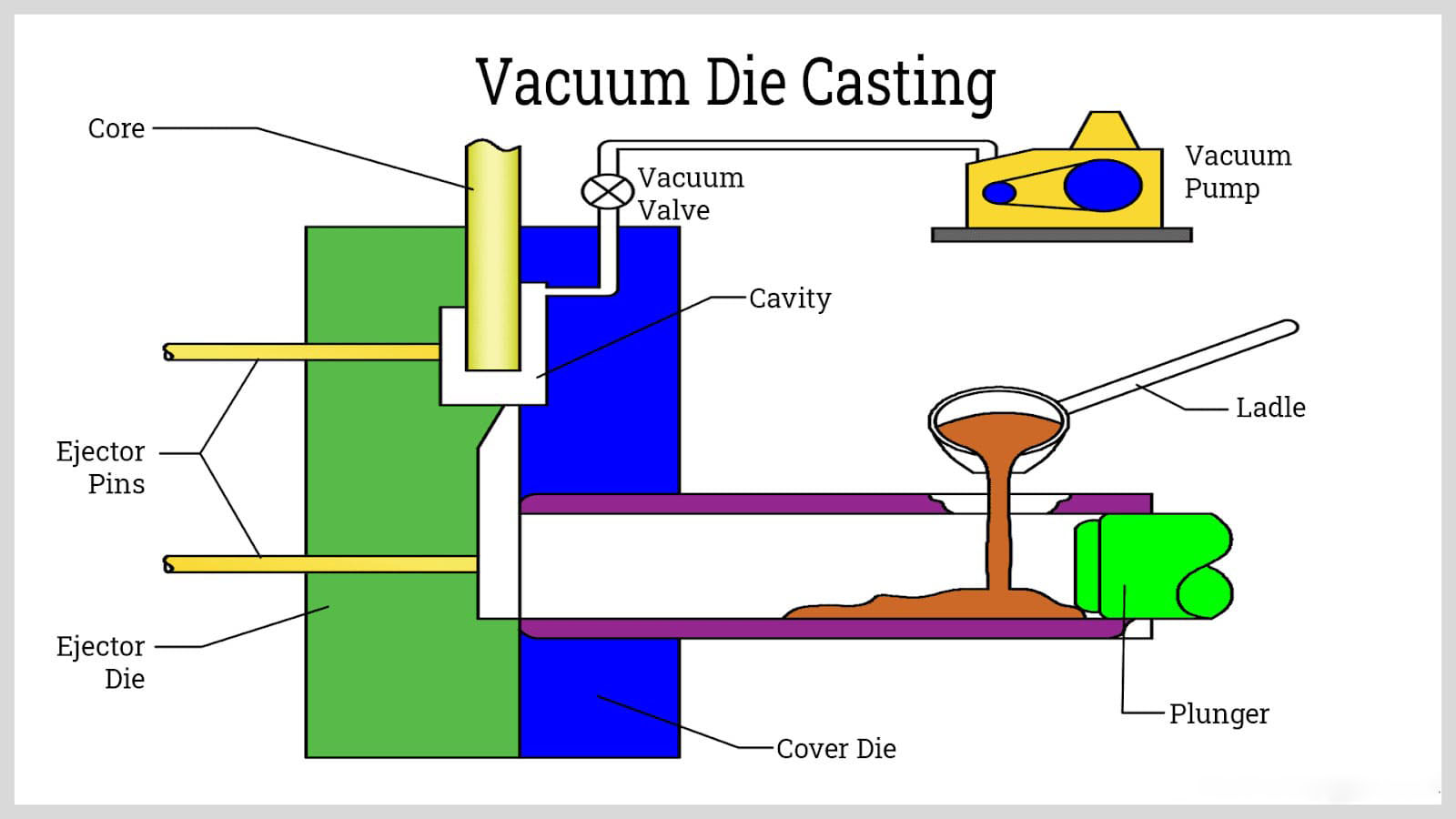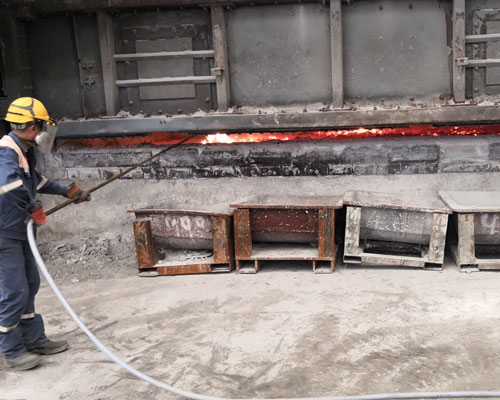Aluminum Foundry ensures trusted aluminum casting performance
Wiki Article
A Comprehensive Guide to the Manufacturing Techniques Employed in an Aluminum Foundry
The manufacturing methods utilized in aluminum factories are critical and diverse to the industry. Each method, from sand spreading to additive production, supplies special benefits customized to details manufacturing needs. Understanding these techniques can significantly influence product quality and efficiency. As the demand for advanced manufacturing remains to expand, the value of grasping these methods can not be overstated. What implications do these advancements hold for the future of aluminum production?Recognizing Light Weight Aluminum Alloys and Their Quality
Light weight aluminum alloys play a necessary function in the manufacturing procedure because of their diverse homes and applications. These alloys are largely classified right into 2 groups: functioned and cast alloys, each with unique qualities. Wrought alloys, such as the 6000 and 7000 collection, are understood for their outstanding strength-to-weight ratio and corrosion resistance, making them ideal for structural applications. On the other hand, cast alloys, including the 2000 and 3000 series, exhibit superior fluidity and can be conveniently built into complex forms.
The particular homes of light weight aluminum alloys, such as tensile stamina, ductility, and thermal conductivity, are affected by their chemical composition and processing methods. Components like copper, silicon, and magnesium are generally included in improve these properties, tailoring the alloys for details uses in aerospace, automobile, and construction markets. Recognizing these alloys and their behaviors is vital for enhancing production procedures and guaranteeing high-quality results in aluminum Foundry operations.
Sand Casting: A Standard Technique for Light Weight Aluminum Manufacturing
Sand spreading is an extensively made use of strategy in aluminum manufacturing that includes developing a mold from sand to shape the steel. This method uses a number of benefits, such as cost-effectiveness and the capacity to create complex shapes, while also presenting specific downsides, consisting of surface finish restrictions and slower production rates. Aluminum Foundry. Comprehending both the procedure and its pros and disadvantages is important for examining its viability in different applicationsProcess Overview
Among one of the most long-lasting strategies in steel casting, sand casting provides a reliable approach for producing light weight aluminum elements. This process starts with creating a mold and mildew from a blend of sand and a binding representative, which is shaped to match the wanted component. When the mold is prepared, liquified light weight aluminum is put into the dental caries, permitting it to load the area and take on the mold's form. After cooling, the mold is damaged away to reveal the cast aluminum part. Any kind of necessary ending up procedures, such as machining or surface therapy, can then be applied to accomplish the final requirements. Sand spreading is extensively used due to its convenience, allowing the production of intricate forms and varying sizes successfully.Drawbacks and advantages
The sand casting procedure provides a distinct set of benefits and disadvantages that affect its application in aluminum production. One substantial advantage is its adaptability, allowing for the manufacturing of intricate sizes and shapes. In addition, sand casting is cost-efficient for low to medium manufacturing volumes, requiring very little tooling. It likewise has disadvantages, such as lower dimensional accuracy and surface finish compared to more advanced methods. The process can be labor-intensive, needing experienced labor for mold prep work and putting. The production rate might be slower, restricting its performance for high-volume applications. In general, while sand spreading stays a sensible option for lots of light weight aluminum elements, its constraints should be considered in the context of specific production demands.Die Casting: Precision and Effectiveness in Production
Pass away casting stands as a cornerstone of light weight aluminum Foundry manufacturing, using unequaled precision and effectiveness. This method includes compeling molten light weight aluminum into a steel mold and mildew under high stress, leading to very exact and regular elements. The procedure permits intricate designs and limited tolerances, making it optimal for applications in vehicle, aerospace, and durable goods.The performance of die casting appears in its fast production prices, which significantly reduce lead times. In addition, the technique decreases waste, as excess metal can be reused. The longevity of die-cast elements boosts the long life of products, minimizing the need for constant substitutes.
Die casting supports different surface area coatings and additional procedures, adding to its adaptability. This mix of accuracy, speed, and material preservation positions pass away casting as a favored option for suppliers looking for affordable options without compromising quality. In the competitive landscape of aluminum Foundry methods, pass away spreading continues to be a critical strategy.
Financial Investment Spreading: Getting Facility Geometries
Usually outweighed by die casting, investment spreading plays a considerable role in aluminum Foundry production by making it possible for the development of elements with elaborate geometries and great details. This method involves creating a wax pattern, which is covered in a ceramic covering. Once the covering sets, the wax is disappeared, leaving a tooth cavity that reflects the wanted shape of the end product.Investment casting is specifically beneficial for producing complicated components that may be impossible or hard to accomplish via other approaches. The procedure enables for high dimensional precision and a smooth surface coating, minimizing the requirement for extensive machining. Furthermore, it supports a large range of alloys, enhancing its convenience in manufacturing applications. By using investment casting, shops can meet the demands of sectors such as aerospace, automobile, and clinical, where accuracy and complexity are extremely important.
The Role of Additive Production in Light Weight Aluminum Foundries
Additive manufacturing is significantly identified for its transformative capacity in light weight aluminum shops, providing advantages such as decreased material waste and boosted style adaptability. Numerous techniques, consisting of 3D printing and binder jetting, are being adopted to improve manufacturing processes and enhance effectiveness. As the market evolves, future patterns may additionally integrate additive manufacturing, reshaping standard Foundry techniques.Benefits of Additive Manufacturing
As the production landscape evolves, the integration of additive production in aluminum foundries offers a transformative change in production capabilities. This cutting-edge technique uses a number of significant advantages, including decreased product waste, as it enables specific layering and very little excess. In addition, additive manufacturing facilitates fast prototyping, allowing quicker iterations and modifications during the layout stage. This innovation also supports the production of complicated geometries that conventional approaches may battle to attain, enhancing item capability and performance. It can enhance supply chains by enabling localized manufacturing, decreasing transport prices and lead times. Inevitably, the adoption of additive manufacturing equips light weight aluminum factories to boost efficiency, improve product high quality, and fulfill the growing demand for modification in production.
Typical Strategies Made Use Of
Discovering the landscape of aluminum factories reveals a range of usual strategies that utilize find additive manufacturing to improve production procedures. One common approach is making use of 3D printing for creating intricate molds, which permits elaborate styles that traditional techniques can not accomplish. This method More Info decreases product waste and shortens lead times considerably. Furthermore, binder jetting is utilized to produce sand molds directly from digital models, enhancing the manufacture procedure. An additional technique includes the combination of metal additive manufacturing, which allows the production of highly customized aluminum components. These strategies not just boost efficiency yet additionally add to development in design, permitting factories to fulfill diverse customer needs while preserving top notch requirements.
Future Patterns in Market
While the light weight aluminum Foundry sector has actually traditionally relied upon conventional manufacturing techniques, the assimilation of additive manufacturing is positioned to redefine manufacturing standards. This innovative technique enables the production of complex geometries that are often impossible to achieve through typical casting techniques. By enabling rapid prototyping and minimizing product waste, additive production improves performance and sustainability within light weight aluminum shops. In addition, this technology assists in personalization, enabling producers to fulfill details customer requirements without extensive retooling. As the industry embraces digitalization, advancements in 3D printing modern technologies will likely lead to faster manufacturing cycles and minimized preparations. Subsequently, the future of light weight aluminum factories is progressively linked with the benefits and capacities supplied by additive manufacturing.Quality Assurance Steps in Aluminum Foundries
Quality assurance procedures in aluminum factories are fundamental to guarantee the honesty and performance of actors items. These steps consist of strenuous examination processes, which incorporate both visual assessments and progressed screening techniques such as X-ray radiography and ultrasonic testing. Checking crucial specifications, such as temperature level and alloy make-up during the melting and putting processes, is important to assure the desired product visit our website residential or commercial properties.Furthermore, adherence to standard treatments, such as ISO qualifications, assists keep constant high quality. Statistical process control (copyright) methods are often employed to evaluate production information, enabling the identification of patterns and possible issues early in the manufacturing cycle.

Future Fads and Developments in Light Weight Aluminum Spreading Techniques
As the aluminum spreading market advances, innovative techniques are arising to boost efficiency and item quality. One remarkable pattern is the combination of advanced automation and robotics, which enhance processes and reduce labor expenses. This change permits consistent accuracy in spreading, minimizing problems and improving general result.In addition, the adoption of 3D printing modern technology for pattern-making is acquiring grip, making it possible for rapid prototyping and the manufacturing of complex geometries that standard approaches battle to achieve. Additionally, making use of simulation software program facilitates a lot more accurate predictions of product actions throughout spreading, resulting in optimized designs and decreased waste.
Sustainability is also a focal point, with efforts toward reusing aluminum scrap and adopting environment-friendly methods in factories. These developments show a commitment to advancing light weight aluminum spreading techniques, guaranteeing enhanced performance, lowered ecological impact, and adaptability to market needs. The future of light weight aluminum casting assures substantial improvements that will reshape the sector landscape.
Regularly Asked Inquiries
What Security Steps Are Executed in Light Weight Aluminum Foundries?
Precaution in light weight aluminum factories include personal protective tools, ventilation systems, regular safety training, emergency methods, and checking for dangerous products (Aluminum Foundry). These practices intend to lessen dangers connected with heats and prospective chemical exposureHow Is Waste Managed in Aluminum Casting Processes?
Waste management in aluminum spreading processes usually involves recycling scrap steel, using correct control for unsafe materials, and using reliable filtering systems. These techniques decrease environmental impact and promote source sustainability throughout the production cycle.What Ecological Regulations Influence Aluminum Foundries?
Environmental laws significantly impact light weight aluminum shops by imposing requirements on discharges, waste disposal, and energy usage. Compliance warranties sustainable methods, lowers environmental impacts, and advertises the responsible use of sources throughout the aluminum manufacturing procedure.Just How Do Factories Handle Devices Upkeep and Services?
Shops commonly carry out set up upkeep programs, conducting routine evaluations and repairs to guarantee devices runs efficiently. They may utilize specific professionals and make use of predictive maintenance technologies to reduce downtime and enhance overall operational effectiveness.What Are the Common Lead Times for Aluminum Casting Projects?
Common lead times for aluminum casting projects can differ considerably, typically ranging from a few weeks to several months. Factors influencing these timelines consist of task intricacy, material accessibility, and the Foundry's current workload and capacity.Sand spreading is a commonly utilized method in aluminum manufacturing that includes producing a mold and mildew from sand to shape the metal. One of the most long-lasting techniques in metal casting, sand casting uses a dependable technique for creating aluminum parts. The sand casting process presents an unique collection of advantages and disadvantages that affect its application in light weight aluminum production. Frequently overshadowed by die spreading, investment casting plays a substantial function in aluminum Foundry production by making it possible for the development of components with detailed geometries and fine information. Waste management in light weight aluminum casting procedures normally involves reusing scrap metal, making use of appropriate control for hazardous products, and employing reliable filtration systems.
Report this wiki page